Recently, a plumbing device such as a bidet has been particularly popular. It allows you to carry out hygiene procedures without leaving the toilet. However, planning the installation and installation may cause problems, one of which is associated with determining the distance to the toilet. This will be discussed in this article.
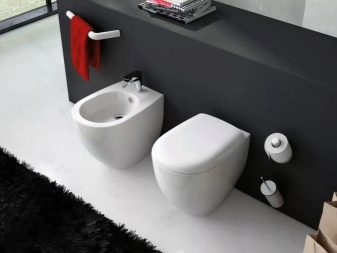
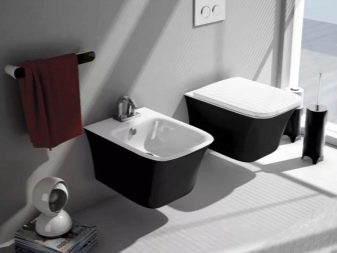
Features
Very often people tend to think that arranging a bathroom and especially a toilet is a fairly simple task, but in most cases this, unfortunately, is not entirely true. The plumbing in question should be located next to the sewage drain, while The optimum distance to the other integral components of the room must be respected.
Building standards will be specific for specific houses and apartments, it all depends on the quadrature of the bathroom or toilet, on the shape of the room.
Therefore, if you need to equip the restroom competently and organically, then you need to build on specific guidelines regarding health and hygiene.

Toilets and bidets are usually next to each other, but it’s important that they are not installed too close or too far. During use, there should be enough space for the movement of one person of a small physique. In the same way as a toilet bowl, a bidet should not be placed in the immediate vicinity of a door or wall, otherwise it will be inconvenient to use them.
Space planners suggest a minimum distance of 40 cm between the center line of the toilet and the center line of the bidet (along the axes).
The center line of the toilet or bidet is an imaginary line that divides the plumbing into two equal parts in the middle. As a rule, the given parameter corresponds to the length of the elongated elbow and allows users to comfortably operate the described plumbing devices.
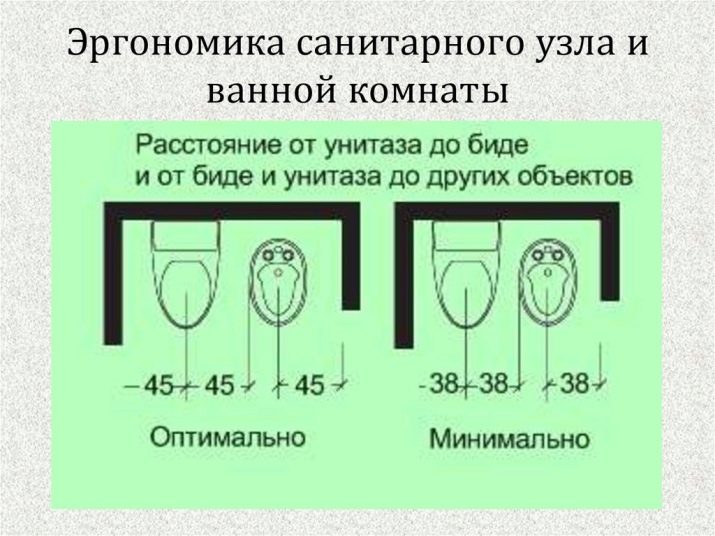
note that the specified distance of 40 cm (in some cases 50 cm) should not only be between installations, but also to other products from them in the bathroom or toilet: bathtub, floor lockers, washing machine and more.
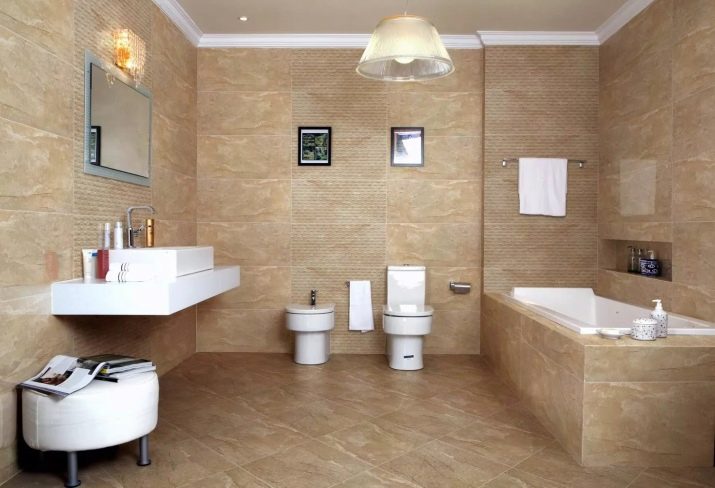
Room size
It is clear that a large bidet in a small toilet will look too bulky. Therefore, it is necessary to choose the right model from the beginning, and for this you need to measure the room and draw a scale plan for this bathroom or toilet. The drawing allows you to understand where it is best to place a bidet. In this regard, it will be easier to choose its size.
During the development of the project, it is important to provide sufficient space in front of the plumbing so that it is convenient to use the toilet and bidet.
From each plumbing fixture to the wall, a minimum distance of 60 cm must remain in front of it, meanwhile the optimal value is called 70 cm. You can always arrange the plumbing so that the most remote device is away from the sewer pipe at a distance of 3 m.
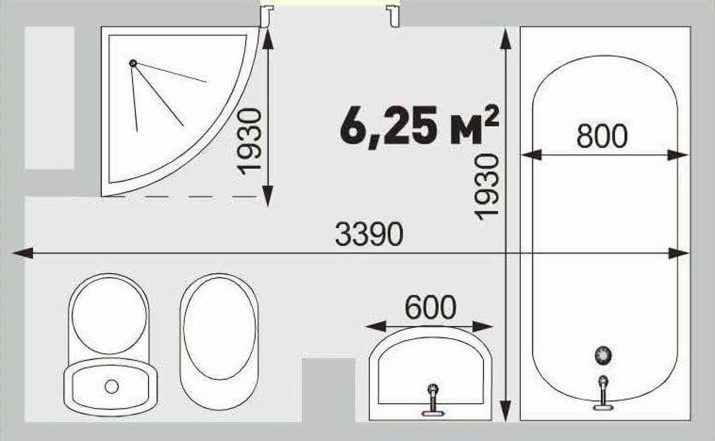
When planning, you should also consider how the toilet and bidet will look together. These plumbing fixtures are very similar, therefore, for a more harmonious visual perception, approximately similar options should be selected: in style, color and size. In the case of using a wall-mounted toilet, a bidet must also be purchased in a suspended version.
If the bathroom is shared, then equipment should be placed so that the room is divided into separate zones, that is, sanitary, where a toilet with a bidet will be placed, and hygiene - a bathtub or shower and sink.
In addition, you can designate these zones, that is, divide them with partitions or a different color of flooring. You should also not forget about the place for the washing machine, unless, of course, you decide to install it in the bathroom.
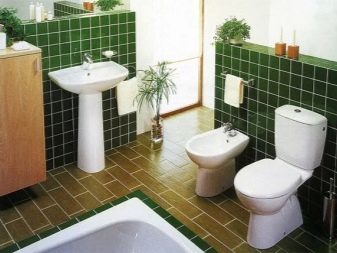
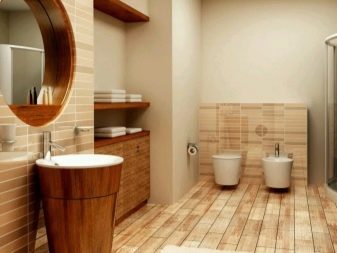
Minimum distance
If we talk about the minimum distance, then this value varies from 25 to 30 cm.
It is important, when the room is large, not to "scatter" the devices at different angles - the distance between the toilet and the bidet should remain comfortable regardless of the room's square.
It should not be forgotten that both of these plumbing equipment form a complete functional complex, which is why you should place them close. It will be more difficult for those who have a bathroom with a too small area, and there is a desire to put a bidet. In this situation, placing a bidet too close to the toilet is considered incorrect.
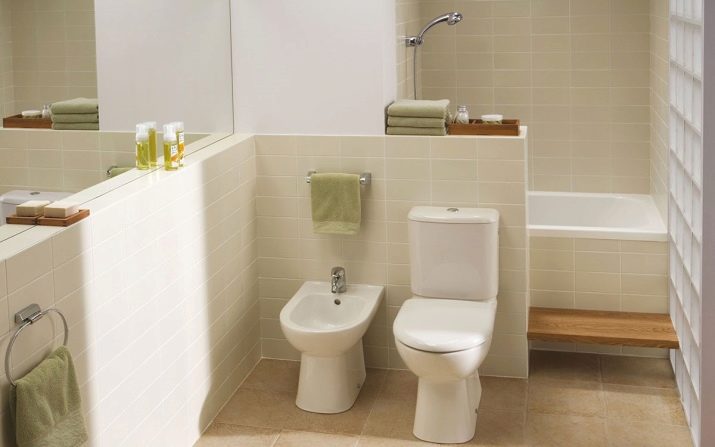
If you do not observe the minimum distance, the devices will be quite inconvenient and difficult to use. Therefore, in any situation, it is worth maintaining the recommended remoteness, it is better to choose a more compact plumbing equipment.
If the conditions do not allow the installation of a bidet, pay attention to the following devices:
- hygienic shower;
- bidet cover;
- shower bidet.
All these devices will allow you to equip the toilet and make it more functional without loss of free space and space.

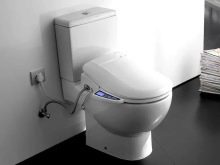
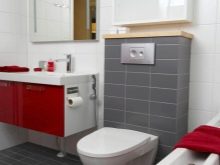
Installation and Connection
You can independently install the bidet, because you will not need any special skills for this. It is enough to carefully study the installation manual and follow clear and simple instructions.
The bidet connects to an existing cold water source next to the toilet in the toilet or bathroom.
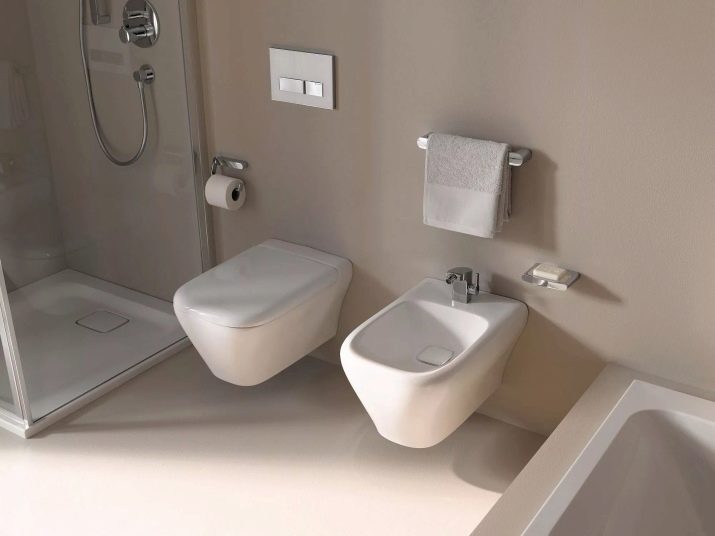
There are models with a water heater installed inside, therefore a separate hot water line is not required in this case. A separate drainage is also not necessary, because by washing everything is washed off into the drain pipe. However, this model will require electricity, so make sure there is a power outlet nearby.
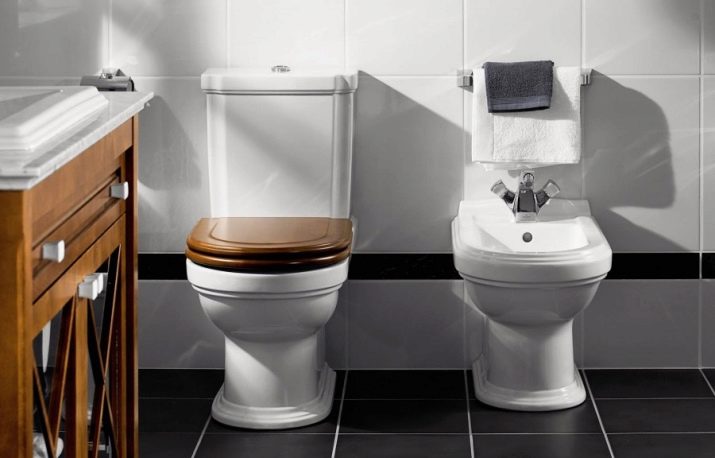
If we talk about installing a regular bidet, to which you need to bring cold and hot water, then the actions will be as follows:
- the bottom of the bidet must be placed on a rubber sheet and circled around the edges with chalk or a marker, in addition, it will be necessary to mark the places for mounting holes;
- gasket is cut out, special holes for fasteners are made;
- the bidet is placed on the floor and the marker is surrounded by the sole; here, the position of the fasteners will also need to be noted;
- using a puncher, make holes in the floor according to the marking for special fasteners;
- dowel sleeves are driven into each hole with a hammer;
- the previously cut rubber lining should be glued to the silicone sealant to the floor in the outlined range (marker);
- lubricate the lining with sealant on top and install a bidet;
- it remains to attach the device to the floor using threaded fasteners (if earthenware or porcelain plumbing is installed, the fasteners must be tightened very carefully, since excessive efforts can lead to damage to the product, which can simply burst).

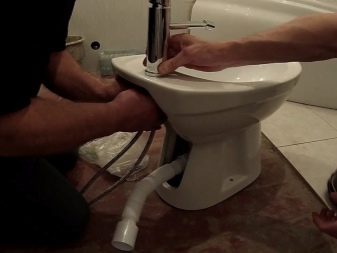
It remains to attach a special siphon with a mixer to the bowl, and then connect the communications.
Make sure all connections are secure.
Open the water supply by turning the knob counterclockwise and check the connections for leaks.
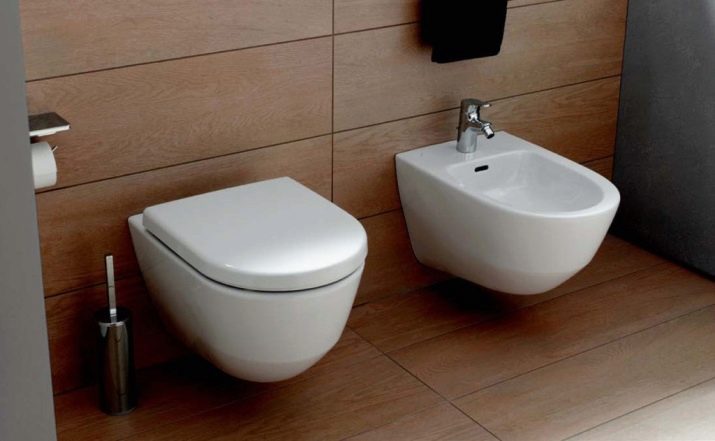
The following video provides an overview of an inexpensive bidet that can be installed on any toilet.







